
Back
Memecylon garcinioides Blume
| Family Name: | Melastomataceae |
| Common Name: | Bangas, Bangas Merah, Sial Menahun |
Name
Classifications and Characteristics
| Plant Division | Angiosperms (Flowering Seed Plants) |
|---|---|
| Plant Growth Form | Tree (Small (6m-15m)), Shrub |
| Lifespan (in Singapore) | Perennial |
| Mode of Nutrition | Autotrophic |
| Plant Shape | Irregular |
| Maximum Height | 5 m to 15 m |
Biogeography
| Native Distribution | Peninsular Thailand, Sumatra, Malaysia, Singapore, Pulau Karimata, Borneo, and Java |
|---|---|
| Native Habitat | Terrestrial (Primary Rainforest, Secondary Rainforest, Freshwater Swamp Forest, Grassland / Savannah/ Scrubland) |
| Preferred Climate Zone | Tropical |
| Local Conservation Status | Native to Singapore (Critically Endangered (CR)) |
Description and Ethnobotany
| Growth Form | It is a shrub up to 5 m tall, or a tree up to 15 m tall. |
|---|---|
| Foliage | Its opposite, stalked leaves have somewhat leathery leaf blades that are oval to egg-shaped and 5.5–14 by 2–6 cm. The dried leaf blades are also dark brown to blackish or sometimes greenish above, and brown often dotted with a greenish hue below. |
| Flowers | Its flowering clusters are 1–3.5 cm long, and found from leaf axils. These clusters consist of many white-bluish flowers. |
| Fruit | Its round fruits are blue-purple and 6–7 mm wide. |
| Habitat | It grows in primary and keranga forests up to 600 m altitude. It is also found on hillsides and ridges with sandy to clayey soil. It occurs locally in Mandai area and Nee Soon Swamp Forest. |
| Associated Fauna | Its flowers are insect-pollinated. Its fruits are eaten by birds. |
| Cultivation | It can be propagated by seed. |
| Etymology | Latin Memecylon, derived from its resemblance to memaecylon (Greek for fruits of the strawberry tree, Arbutus unedo); Latin garcinioides, similar to Garcinia (a genus in the mangosteen family), referring to the similarity between the leaves of these two genera |
| Ethnobotanical Uses | Others: Walking-sticks may be made from its wood. |
Landscaping Features
| Landscaping | It is suitable for parks and gardens for its blue flowers. |
|---|---|
| Desirable Plant Features | Ornamental Flowers |
| Landscape Uses | General, Parks & Gardens, Small Gardens |
Fauna, Pollination and Dispersal
| Fauna Pollination Dispersal Associated Fauna | Bird-Attracting |
|---|---|
| Pollination Method(s) | Biotic (Fauna) |
| Seed or Spore Dispersal | Biotic (Fauna) |
Plant Care and Propagation
| Light Preference | Full Sun, Semi-Shade |
|---|---|
| Water Preference | Moderate Water |
| Plant Growth Rate | Moderate |
| Rootzone Tolerance | Moist Soils, Well-Drained Soils, Fertile Loamy Soils |
| Maintenance Requirements | Moderate |
| Propagation Method | Seed |
Foliar
| Foliage Retention | Evergreen |
|---|---|
| Mature Foliage Colour(s) | Green |
| Mature Foliage Texture(s) | Leathery |
| Foliar Type | Simple / Unifoliate |
| Foliar Arrangement Along Stem | Opposite |
| Foliar Attachment to Stem | Petiolate |
| Foliar Shape(s) | Non-Palm Foliage (Oval, Elliptical) |
| Foliar Venation | Pinnate / Net |
| Foliar Margin | Entire |
Floral (Angiosperm)
| Flower Colour(s) | Blue |
|---|---|
| Flower Grouping | Cluster / Inflorescence |
| Flower Location | Axillary |
| Flower Symmetry | Radial |
Fruit, Seed and Spore
| Mature Fruit Colour(s) | Black, Blue, Purple |
|---|---|
| Fruit Classification | Simple Fruit |
| Fruit Type | Fleshy Fruit , Non-Accessory Fruit |
Image Repository
Others
| Master ID | 31884 |
|---|---|
| Species ID | 6285 |
| Flora Disclaimer | The information in this website has been compiled from reliable sources, such as reference works on medicinal plants. It is not a substitute for medical advice or treatment and NParks does not purport to provide any medical advice. Readers should always consult his/her physician before using or consuming a plant for medicinal purposes. |


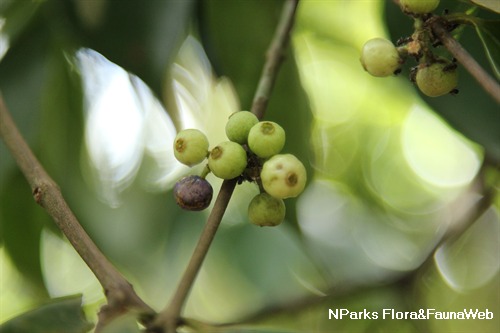
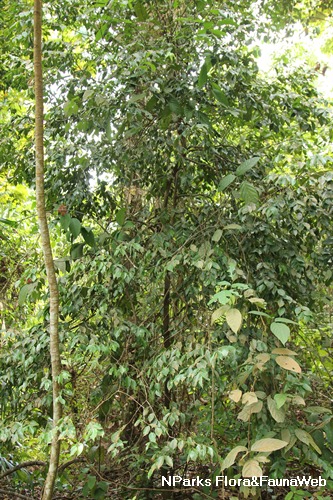
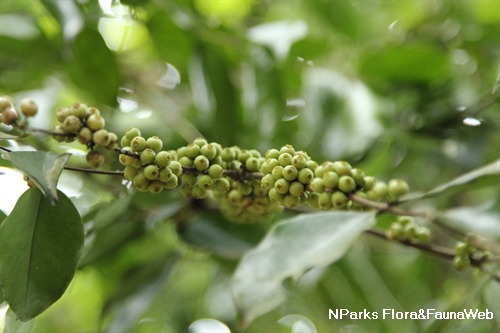
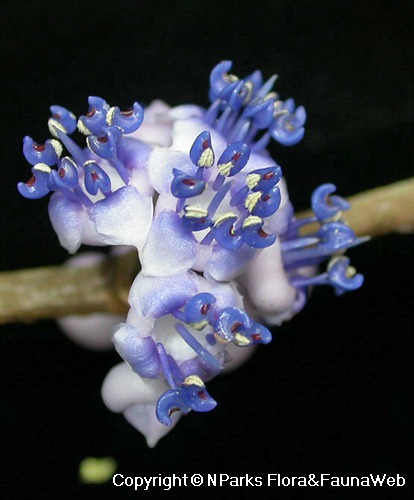
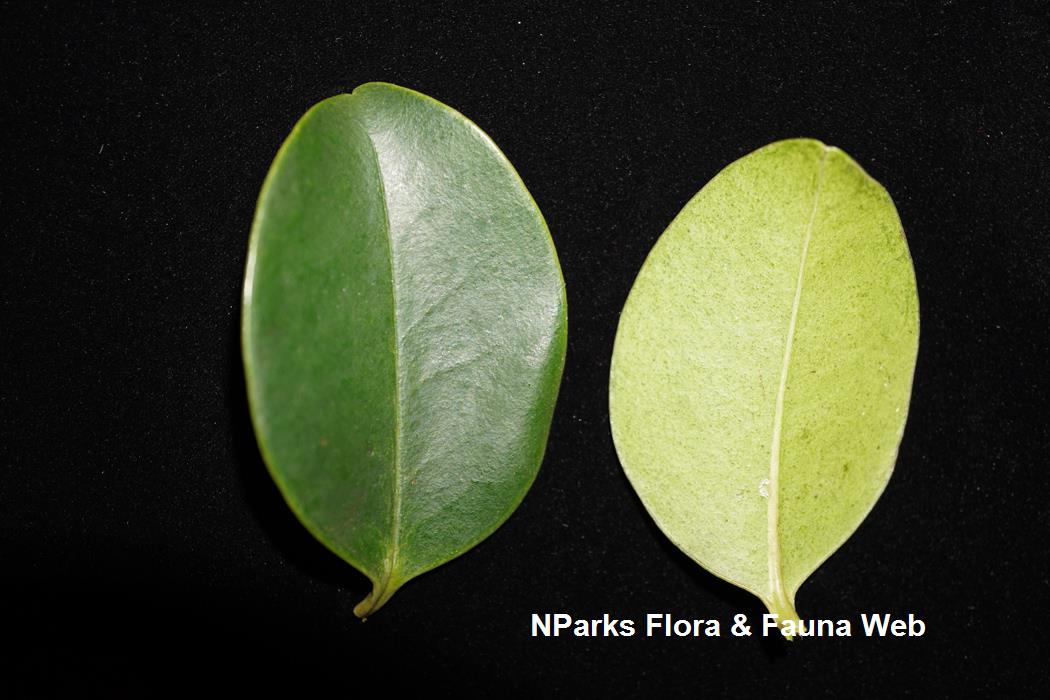

_lowres.jpg)